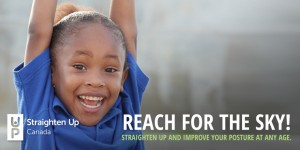Sagittal Standing Posture and its Association with Spinal Pain
Sagittal Standing Posture and its Association with Spinal Pain: A School-based Epidemiological Study of 1196 Flemish Adolescents Before Age at Peak Height Velocity
SOURCE: Spine (Phila Pa 1976). 2012 (Sep 1); 37 (19): 1657-1666
Mieke Dolphens; Barbara Cagnie; Pascal Coorevits; Guy Vanderstraeten; Greet Cardon; Roseline D’hooge; Lieven Danneels
Department of Rehabilitation Sciences and Physiotherapy,
Faculty of Medicine and Health Sciences,
Ghent University, Artevelde University College, Ghent, Belgium.
STUDY DESIGN: Cross-sectional baseline data set on the sagittal standing posture of 1196 adolescents.
OBJECTIVE: To describe and quantify common variations in the sagittal standing alignment in boys and girls who are in the same phase of growth and to explore the association between habitual standing posture and measures for spinal pain.
SUMMARY OF BACKGROUND DATA: Data on postural characteristics and spinal pain measures in adolescence are sparse, especially when somatic and biological maturity status is to be considered. Our understanding of the relationship between standing posture in the sagittal plane and spinal pain is also deficient.
METHODS: A total of 639 boys (age [mean ± SD], 12.6 ± 0.54 yr) and 557 girls (10.6 ± 0.47 yr), with predicted years from peak height velocity (PHV) being 1.2 ± 0.71 and 1.2 ± 0.59 pre-PHV, respectively, were studied. Postural examination included the assessment of global alignment and local spinopelvic characteristics, using post hoc analyses of digital images and direct body measurements (palpation, digital inclinometry, and wheeled accelerometry). Spinal pain experience was assessed by questionnaire.
RESULTS: A wide interindividual variation in sagittal posture characteristics was observed. Logistic regression analyses yielded global alignment parameters to be associated with low back pain (lifetime prevalence), neck pain (lifetime prevalence, 1–mo prevalence, and doctor visit), and thoracic spine pain (doctor visit) outcome measures. None of the included local spinopelvic parameters could be identified as an associated factor with measures of spinal pain.
There are more articles like this @ our:





